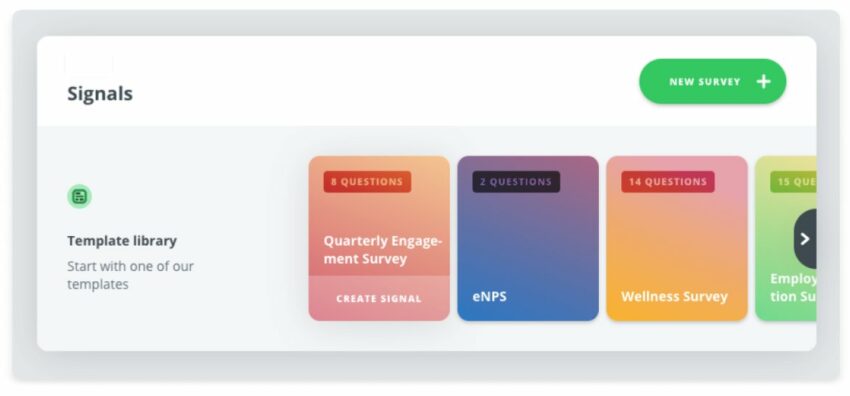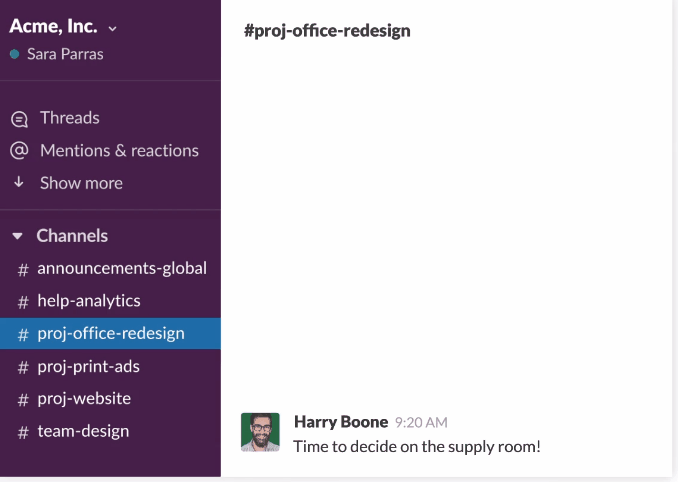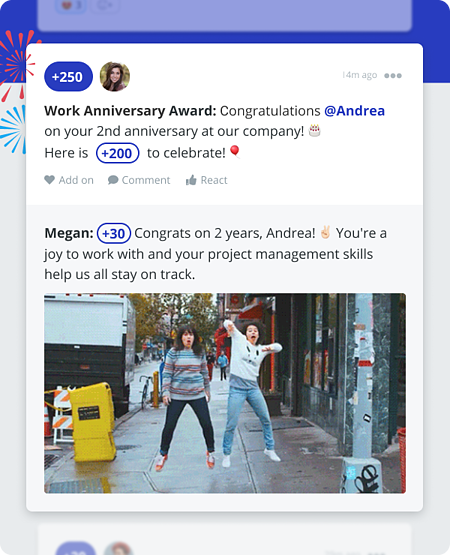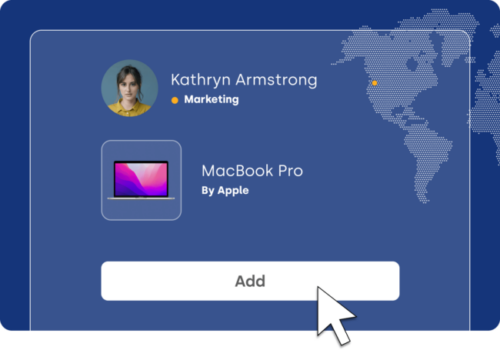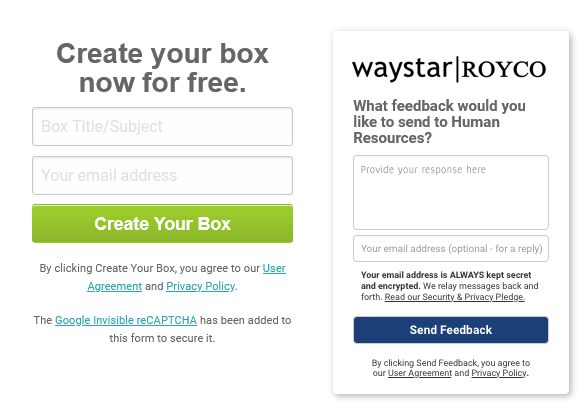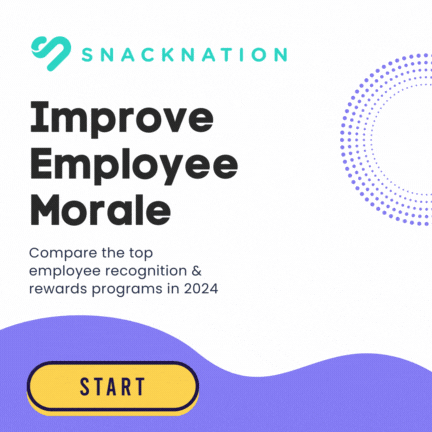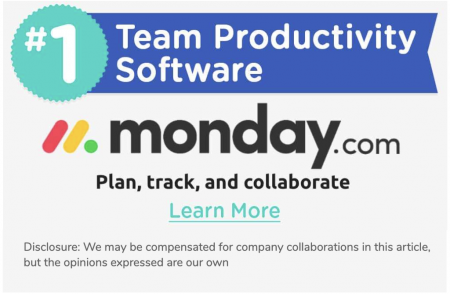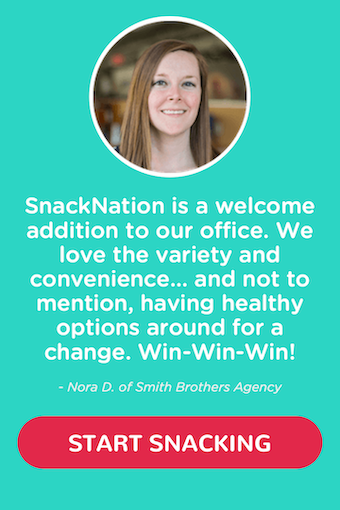If you’re not actively deploying employee engagement strategies at your workplace, you’re leaving money on the table.
A lot of it.
According to a recent report by global analytics and advisory firm Gallup, “business units with engaged workers have 23% higher profit compared with business units with miserable workers.”
Disengagement can also hit your bottom line in more ways than one.
An employee who earns an annual salary of $10,000 can cost you a further $3400 (34%) simply because of disengagement. It’s the cumulative result of classic disengagement behaviors — disengaged employees have 37% higher absenteeism, 18% lower productivity, and 15% lower profitability rates.
Compounding the challenge is the fact that employee engagement rates experienced their first annual decline in a decade in 2021.
Only 32% of employees in the U.S. can be referred to as “engaged” as of 2022.
But all’s not lost.
Despite these trends, several organizations in the U.S. have doubled these engagement rates. The message is you can do it too.
An employee that earns an annual salary of $10,000 can cost you a further $3400 (34%) simply because of disengagement. Click To TweetThis article covers 13 battle-tested and highly effective employee engagement strategies to boost employee morale and put your business on track to greater profitability.
In a hurry? These are some of our favorite employee engagement tools & platforms:
| Motivosity | 🏆 Reward your team’s priorities, culture, and performance with premium incentives | Visit Motivosity |
| Bucketlist | 🎁 Award them an eGift | Visit Bucketlist |
| WorkTango | 🌟 Engage and retain employees with recognition, rewards, surveys, and more | Visit WorkTango |
| Bonusly | 🥇 Recognize and reward employees for their achievements and milestones | Visit Bonusly |
| Nectar | 😃 Peer-to-peer recognition, Amazon integration, boost your engagement and retention | Visit Nectar |
| 👉 Compare more HR-vetted and approved options here | ||
What are employee engagement strategies?
An employee engagement strategy is an action plan that consists of concrete steps you can take to drive a very specific result, which in this case, is increasing employee engagement by a pre-determined percentage.
When an employee is said to be engaged, it simply means that they’re physically, psychologically, and emotionally vested in their job while at work. They’re intrinsically motivated, committed, loyal, and completely trust their company’s mission and workplace culture.
But this ideal state isn’t a default position. Achieving solid employee engagement is a long-term game that requires consistent watering from the get-go.
Team member engagement strategies should encompass the entire employee lifecycle starting from recruitment to onboarding, training and development, recognition programs, and development opportunities, all the way through to the end of the employee’s contractual engagement.
Provided you’ve researched measuring your current employee engagement rates and determining the gaps, having a strategy in place gives you a focused roadmap to achieve your desired outcomes.
What are the benefits of implementing an employee engagement strategy?
Implementing successful employee engagement strategies has a knock-on effect on the employees and the organization. Engaged employees are ultimately better performers, and a better performance translates to increased profits in the long run.
📈 Productivity
Productivity is measured against a standardized output per worker relative to specific timelines and contexts or situations.
Disengagement behaviors such as a lack of commitment or passion towards the job or the company’s core values, underperformance, and lack of interest, often demonstrated by late coming, absenteeism, and withdrawal from participation, all contribute to decreased productivity.
Conversely, highly engaged employees work well within a team environment, are accountable, and own their responsibilities resulting in positive stakeholder and customer interactions. The result? Increased productivity and optimal ROI.
🧘🏻♀️ Wellbeing
Employee well-being is a composite of emotional, financial, and physical wellness. If an employee is experiencing a lack of optimal health in just one of these areas, it can impact how well they can engage with the organization, team members, and clients.
At the same time, effective employee engagement can boost states of wellness in employees, especially if they’re already stressed, undermotivated, or burnt out due to the work culture.
Wellness is also closely aligned with workplace safety and quality. Businesses with higher employee engagement rates can boast up to 48% fewer safety incidents, 41% fewer patient safety incidents, and 41% fewer quality incidents or defects.
Company culture — Employee engagement strategies can significantly improve the company culture, making the employee experience enjoyable and highly motivating. 47% of active job seekers cite company culture as a core factor when applying for jobs.
Typical strategies that can immediately impact company culture are adding training, development, and mentorship opportunities into the mix and actively soliciting ideas and feedback.
⭐️ Employee retention
When you voluntarily or involuntarily lose an employee, you’re not just losing an individual. You’re also losing out on:
- The cost of new hires’ recruitment, onboarding, and training (re-skilling, upskilling, and cross-skilling).
- Pre-turnover productivity levels, which replacement hires can take time to catch up on.
- Errors, mistakes, and time to market in customer interactions as your replacement hires bring themselves up to speed.
- Team morale, as turnovers in most cases are associated with a move to bigger or better opportunities.
Training and developing your existing employees as part of your employee engagement initiatives simply makes better business and financial sense.
😓 Burnout
As tempting as it is to think of burnout as an individual problem, it isn’t. Burnout can be directly related to the work environment. Employees can experience burnout when:
- They feel undervalued.
- They have a bigger workload than they can realistically handle.
- They’re unclear about what’s expected of them in terms of roles and responsibilities.
- They feel they are unsupported by their peers or management team.
- They experience hostility from their peers or management team.
The best employee engagement strategies include specific approaches to address causes of employee burnout and win back trust.
📢 Company reputation
Engaged employees have a strong sense of purpose and understand how their contribution fits within the context of business goals and objectives. They’re more invested in building up the company’s reputation.
Employees who are not engaged are more likely to spread negativity about the business (bad news travels fast!), infuse toxicity into the work culture, and increase employee turnover rates — all of which can sink a company’s reputation and profitability.
13 Employee Engagement Strategies
We recommend these 13 tried-and-tested employee engagement ideas that can give you exceptional results when implemented right:
1) Measure employee engagement
It’s important to measure current levels of employee engagement to establish a baseline for improvement. While you can’t ignore the metrics in the form of numbers, and they certainly do provide a focal point, ensure you provide space for open-ended feedback too.
Use a variety of different tools like employee surveys, one-on-one team meetings, and exit surveys to get a range of perspectives.
Why we love this strategy to boost employee engagement: Employee engagement surveys can help you identify what the organization is doing well, where it’s going wrong, areas for improvement, and “ah-ha” moments that may not always be apparent on the surface.
Carrying out surveys and implementing changes wherever needed can signal that you mean business and are genuinely vested in positive impact.
How to implement this employee engagement strategy at your company:
Run a pulse survey this week to identify gaps in one area of operations, such as internal culture, manager relationship, job satisfaction, etc. You can use employee engagement apps or survey tools for this purpose.
Anonymous feedback tools can help peers feel comfortable in the initial stages of building an openly transparent culture. Share feedback with key stakeholders and brainstorm ways to turn things around. Ensure you solicit feedback from your participants too, and establish accountabilities all around.
Tip! You can use a platform like Bonusly to send out pulse surveys, poll your team, and engage with your employees to better calculate whose is engaged and who might need a helping hand.
2) Install clear lines of communication
The next step is to establish clear lines for internal communications. An overwhelming 86% of workplace respondents say poor communication is the core cause of company failures. Poor communication can also be a major factor in why employees are disengaged.
Why we love this strategy to boost employee engagement: Transparent communication builds trust, especially when it’s coupled with an open-door policy. Taking on feedback and acting on it is important, as that instills confidence. It’s also important to share relevant information and to clarify areas of ambiguity in roles and responsibilities so employees have what they need to perform at their best.
How to implement this employee engagement strategy at your company:
Discuss the internal communication channels available at your next team meeting, such as internal mailing, the intranet (a good resource for information and updates), chat software, or even messaging for remote team members or colleagues who’re out a lot.
Also, discuss “who to contact for what” so employees know where to get support. Communicate how team members can reach you or other stakeholders in emergencies, over and above the day-to-day operational check-ins.
Emphasize that supervisors, managers, and Human Resources teams are genuinely interested in building an engaged workforce built on active communication and support.
3) Establish work flexibility
Work flexibility is closely linked to work-life balance and more employees are keen to strike that balance. 47% of workers are now more likely to prioritize their family and personal life ahead of work.
As a company, you want to demonstrate that you care for the health and well-being of your workers and follow this up with concrete initiatives.
Some options to consider include unlimited paid leave, flexible working hours, implementing blackout times when employees do not have to respond, and the ability to take a few days off to work from home. Also, consider looking at results achieved instead of the number of hours worked to measure “good work.”
Why we love this strategy to boost employee engagement: Employees who can achieve work-life balance are generally more productive and happier at work. Better work-life balance on the job means that employees have the space to engage in activities outside of work that bring them happiness and fulfillment.
How to implement this employee engagement strategy at your company:
Review employee feedback and preferences in a survey, discuss with key stakeholders, and develop measures based on employee preferences to create a better work-life balance.
4) Celebrate employee milestones
Acknowledging key employee milestones such as birthdays, weddings, and the like can be one of the easiest and simplest strategies to deploy, yet not all companies use it.
You can quickly gather tea members and wish the employee with a card, cake, or gift. If you have larger organizations, you can even do monthly gatherings for all the important milestones for the month. Set aside a monthly budget (it doesn’t need to be exorbitant) for celebrating milestones. Small gestures such as a card signed by all the team members and a cake go a long way!
Why we love this strategy to boost employee engagement: Recognition of major milestones in life can add warmth to your interactions with colleagues. It also makes employees feel acknowledged and an important part of the team.
How to implement this employee engagement strategy at your company:
Collect key life event information from employees and assign one team member to keep track of these. You can house all this data, send employee milestone gifts, and create a team congratulations wall all on a platform like WorkTango.
This platform can help managers upgrade their employee milestone program and find creative ways to make these key events special! For more information, book a short call with WorkTango.
5) Create a team culture where employees are rewarded and recognized
Recognizing and rewarding your employees is a great way to motivate and encourage team members to excel. While employee recognition involves acknowledging a job well done, an employee rewards scheme takes things one step further by providing tangible “prizes”.
Consider recognition and rewards for smaller milestone accomplishments and “going the extra mile,” in addition to the bigger goal wins, to encourage participation.
Why we love this strategy to boost employee engagement: When employees are recognized and rewarded for their hard work, it boosts their self-esteem, makes them feel validated, and encourages them to perform even better. It’s a great way to boost team morale and improve company culture.
How to implement this employee engagement strategy at your company:
Ask your employees what types of rewards they would like the best. If you’re a larger organization, try employee recognition software. The software helps simplify, streamline, and automate the process of recognition and rewards from start to finish. It becomes a task you can run on autopilot.
6) Make sure their workstation can sustain productivity
Workplace design is vital for employee satisfaction. · How workstations and interior layouts are designed can greatly impact how employees feel at work and how happy they are to be there.
It isn’t necessary to make major changes, though. Optimizing the layout of individual workstations alone can make a huge difference in how comfortable employees are while working.
Why we love this strategy to boost employee engagement: Workplace design can greatly impact productivity. It’s only sometimes possible to implement significant changes, but minor changes such as updating the workstation can make a big difference to employees’ well-being and efficiency.
How to implement this employee engagement strategy at your company:
Source employee feedback to understand what changes employees would like to bring to the layouts of their workstations. Not everyone enjoys an open-plan layout because of a lack of privacy and distractions. 37% of employees feel that this layout actually decreases productivity.
Some changes to think about — the height of the monitor relative to the employee’s eyesight (to prevent physical strain)z, whether the chairs and height are adjustable, ensuring phone lines and other assets are within easy reach, privacy screens, adding greenery in the form of plants and redoing the color scheme if it’s too loud or too dull both of which are not favorable for focus or creativity.
Have you ever spent minutes waiting for the spinning wheel of death to load on your old MacBook?
Luckily, the engagement experts at Deel provide an equipment service that helps to deliver employees high-quality work equipment that is worth the investment.
With Deel Equipment, managers can easily ship and manage all the tools their team needs to work from home in just a few clicks.
Choose from a list of equipment options including:
- 👩🏽💻 Laptops
- 🖥 Monitors
- 🎧 Headphones
7) Plan regular team-building or team-bonding events
Regular team–building activities can help foster a spirit of mutual respect and camaraderie amongst team members and reconnect them in a fun and creative way.
The best part — they don’t need a huge budget! The idea is to take employees out of their usual environments so they’re outside their comfort zones and have to think creatively and pool collective resources.
Why we love this strategy to boost employee engagement: Things Things can get boring when employees settle into a routine. There’s also a tendency for silo-ism when teams don’t intermix. Team-building or team-bonding activities are a great way to shake things up, revitalize your team, and engage otherwise remote teams.
How to implement this employee engagement strategy at your company:
Review our list of 79 insanely fun team-building activities for work for ideas. Implement one-three of the ideas for your next outdoor event or in-house meeting. You can even surprise your employees with an active on a relatively slower day!
Here are a few top-rated team-building activities to get you started:
| Coworker Feud | 🙋🏻♀️ Survey says, your team will love this | Coworker Feud |
| Jewel Heist | 🔐 A virtual escape room experience | Jewel Heist |
| Knives Out Murder Mystery | 🔪 Can you solve the crime before it’s too late | Knives Out |
| Online Team Mini Games | 🕹 The ultimate team challenge | Mini Games |
| Virtual Team Jeopardy | ❓ Time to wager your trivia knowledge | Jeopardy |
8) Offer office and remote employee perks
51% of employees see benefits as important in employee retention, while 49% of employees will leave their jobs in the coming year due to a lack of benefits. Better employee perks and benefits can hugely motivate employees to join and stay with your organization.
Why we love this strategy to boost employee engagement: No matter how attractive the salary is, employees consider benefits and perks before signing the dotted line. The most popular perks universally are employee recognition rewards, workspace upgrades, employee discounts and rewards, a home office budget, and performance bonuses.
How to implement this employee engagement strategy at your company:
Take your employees into confidence and identify their most preferred perks. Get executive-level buy-in to implement a list of one to three perks if you haven’t already done so. Tying perks back to performance is a great way to motivate your employees to perform at their best.
9) Connect them to HR for the necessary paperwork, payroll, and questions
While you may have covered key HR questions related to paperwork, payroll, leave, benefits, etc., during the onboarding process for new employees, it’s common for questions to crop up afterward.
If you haven’t already done, so assign an HR resource either inside the team or at an organizational level for small organizations to address any questions your employees may have.
Why we love this strategy to boost employee engagement: Employees love having a go-to person for their most pressing questions on all HR-related matters. It makes them feel that the organization has their back.
Understanding trends in the most-asked questions or least-understood topics helps you identify opportunities for additional training or updates.
How to implement this employee engagement strategy at your company:
Assign a resource specifically to support your employees with HR queries. Communicate who the person is and how best to reach out to them to your colleagues.
Also, review the different types of topics your resource can assist with. You could even ask if your team members want to sign up as an “HR champion” to liaise with HR for the team’s most pressing questions.
10) Solicit feedback from your entire organization
Employee feedback only benefits if it’s taken from across the organization. In addition to understanding the dynamics of teams, you’re also looking at how different levels of organizations function in top-to-bottom, bottom-to-top, and cross-functional team engagement.
Why we love this strategy to boost employee engagement: It factors the entire organization instead of just a few people (in most cases, the employees at the bottom or frontline). Feedback like this can often be eye-opening “sources of truth” as they can throw up unexpected trends useful to planning effective engagement strategies.
How to implement this employee engagement strategy at your company: Run your next employee survey for the entire organization instead of a single team or department. You can use pulse surveys to focus on any one area to start with, as before. Record the result, identify the areas for improvement, and develop an action plan.
11) Ensure your company takes career advancement and professional development seriously
A lack of career development and advancement has been cited as the number 1 reason why 41% of employees left their jobs during 2021-2022. 60% of millennials expect leadership training, while 94% of employees have stated they would stay at the same company if it offered training and development opportunities. Career advancement and professional development are therefore a critical strategy to implement to boost engagement.
Why we love this strategy to boost employee engagement: Having tools and processes for training and development can be highly motivating for employees keen to progress. It beats staying at the same place year in and year out with no signs of upward mobility.
How to implement this employee engagement strategy at your company:
Carry out 1-to-1 meetings with a few employees, one team at a time, and identify training gaps. Also, consider these questions as part of your discussions:
- What do they need more of and less of?
- How do they want their training delivered (e-learning, on-the-job, classroom setting)?
- How will you measure their progress?
12) Continue to refine and update your onboarding process

Onboarding Template courtesy of ClickUp
The onboarding process has a vital role in creating a positive employee experience right out of the gate. Getting the first 90 days right is crucial to employee engagement because there’s no looking back beyond this period, positive or negative.
Once an employee has experienced disappointment over and over again during the initial stages of employment, they’re more likely to want to leave rather than stay and make it work.
Why we love this strategy to boost employee engagement: Like every other facet of the employee cycle, onboarding processes require continuous evaluation and refinement. The key here is to ensure you’re continuously doing employee feedback so you’re always up-to-date on company changes and how new employees experience those changes.
How to implement this employee engagement strategy at your company:
Implement feedback surveys post-onboarding to determine what’s working well and what isn’t. Are there any parts of the journey that can be streamlined to reduce friction and make the process seamless and enjoyable?
13) Create an employee wellness program
Employees in optimal physical, emotional, and mental health perform better and contribute more to the business. 77% of employees in a recent survey stated they had experienced burnout at their current job. Yet, 70% of the same respondents felt their employees needed to do more to reduce or eliminate burnout on the job.
From a cost perspective, employers are spending approximately $190 billion per year in burnout-related healthcare costs each year. In contrast, stress on the job costs the U.S. economy over 500 million dollars and 550 million workdays yearly.
Employee wellness programs are a prerequisite for effective employee engagement strategies.
Why we love this strategy to boost employee engagement: Day by day, more and more people are gravitating towards improving their well-being and cutting healthcare costs. Implementing a well-being program speaks volumes about your commitment to your employees.
How to implement this employee engagement strategy at your company:
Use pulse surveys, one-to-one meetings, or exit surveys to identify what your employees are looking for from a well-being perspective. Develop an employee wellness program based on employees’ stated needs, including who’s responsible for creating the program, how it will be implemented, and how to measure success.
People Also Ask These Questions About Employee Engagement Strategies
Q: Why is it important to implement employee engagement strategies?
A: Implementing employee engagement strategies is important because they can positively impact employee productivity, satisfaction, happiness, well-being, and motivation. Without engagement, employees are more likely to leave or disengage through absenteeism and non-participation.
Q: Are there examples of employee engagement strategies working at larger companies?
A: Absolutely! Refer to our list of top companies that are doing exceptionally well with their employee engagement strategies for specific examples.
Q: How do you introduce new team engagement strategies?
A: Before introducing new team engagement strategies, it’s important to lay the groundwork by carrying out surveys and asking employees what they prefer. Involve employees in making decisions so they avoid ending up with unpleasant surprises.
Keeping employees involved at every stage makes it easier to get their buy-in. Remember to ensure diversity and include remote teams while taking feedback and deciding on ideas.
Q: How do I know if my engagement strategy was successful?
A: Carry out employee engagement surveys before and after the implementation of strategies. Take feedback from line managers and supervisors, again before and after implementation. Use numerical scores or ratings to understand how effective the engagement strategies were.
Q: What are some low-cost or free strategies to boost employee engagement?
A: Some of the most effective strategies don’t have to cost you a single penny. For example, you can ask for employee feedback and include their ideas when making decisions. You could acknowledge team member contributions publicly in meetings or through a company-wide emailer. You can even provide healthy and delicious snack boxes and beverages when your team has done exceptionally well.




